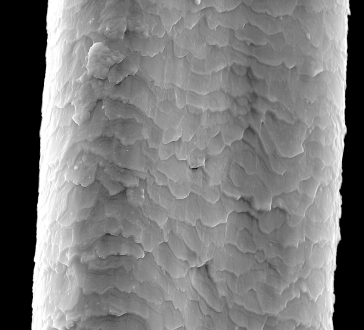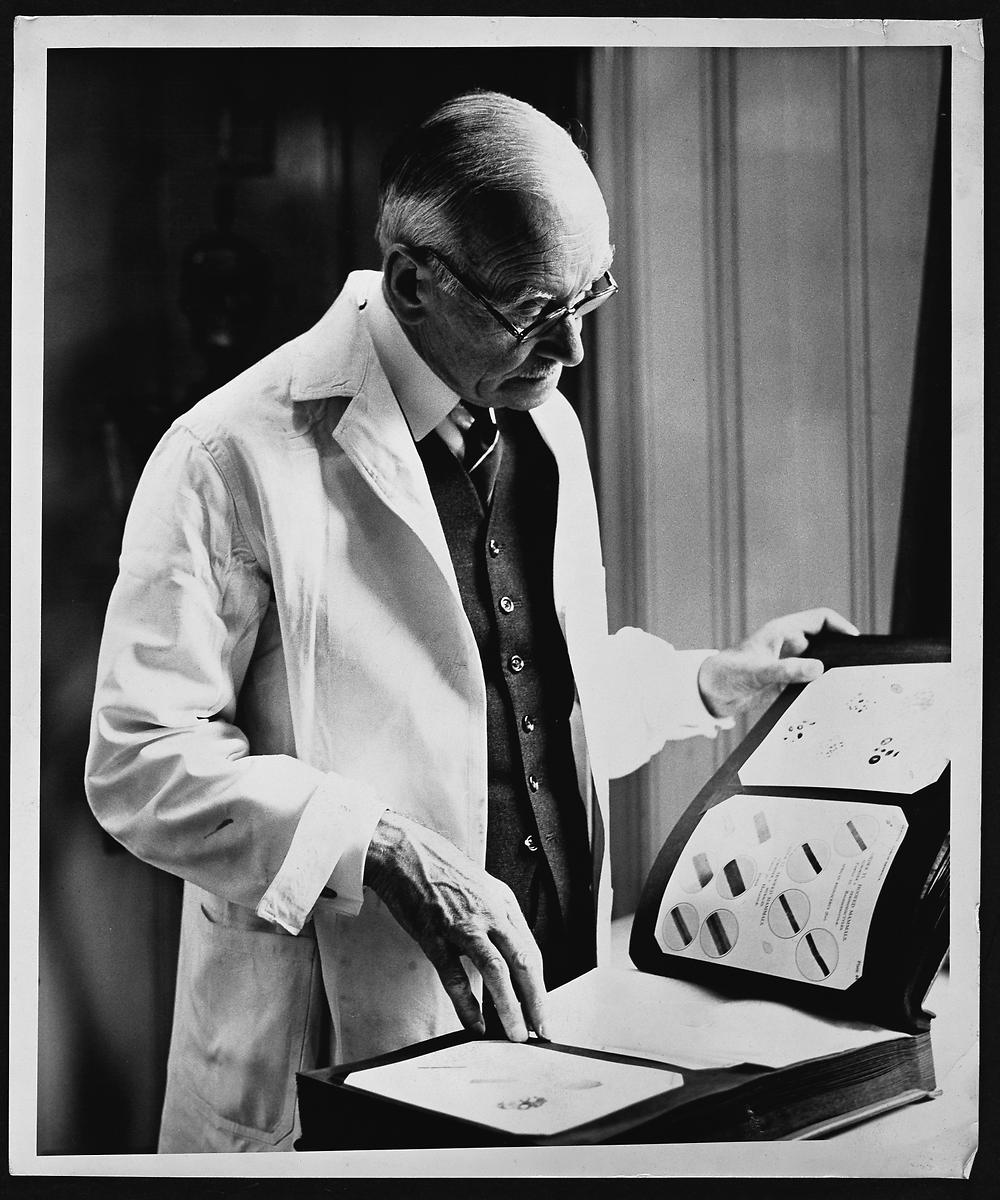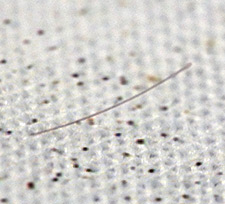Hair Analysis History
- The importance of examining a hair or fiber was recognized in the early stages of forensic science.
- In France, 1857, one of the first forensic science reports was published involving the scientific study of hair. This introduced the idea of hair and fiber analysis.
- The field expanded rapidly after microscopic hair examination became known in the early 20th century.
- Professor John Glaister's "Hairs of Mammalia from the Medico-legal Aspect," was published in 1931 and became a renowned and widely used resource for hair analysis information.
- In 1977, John Hick's "Microscopy of Hairs: A Practical Guide and Manual" laid out the groundwork for the use of hair evidence by the forensic examiner. This established the relevance of hair and fiber analysis in the crime field.
- Forensic hair analysis has played a major role in courts since it the beginning of the 1900s. The academic and scientific world had to see hair analysis as an established science.
- Publications made by John Glaister and later, John Hicks, confirmed the accuracy and validity of hair science. Microscopic hair and fiber comparison help to convict felons who could otherwise go free, and also overturn wrongful convictions.
- The importance of examining a hair or fiber was recognized in the early stages of forensic science.
- In France, 1857, one of the first forensic science reports was published involving the scientific study of hair. This introduced the idea of hair and fiber analysis.
 |
| Hair under a microscope |
- The field expanded rapidly after microscopic hair examination became known in the early 20th century.
- Professor John Glaister's "Hairs of Mammalia from the Medico-legal Aspect," was published in 1931 and became a renowned and widely used resource for hair analysis information.
 |
| John Glaister examining his hair collection |
- Forensic hair analysis has played a major role in courts since it the beginning of the 1900s. The academic and scientific world had to see hair analysis as an established science.
 |
| Hair evidence is iniatated into courts |
Fiber Analysis History
- Fibers are considered a form of trace evidence that is often transferred from the clothing of a suspect to the clothing of a victim during a crime.
- Textile fibers can also be transferred from rugs or blankets by contact between two individuals, between an individual and an object, or between two objects.
- Analysis of fibers that are found on a victim will involve determining the types of fibers present at the scene.
- Fibers found throughout the crime scene will not be as significant as a fiber found on a victim (that is not present anywhere else at the scene). This is because if a similar fiber is found on a suspect, it can be a powerful piece of evidence linking the suspect to the crime.
- French scientist Edmond Locard discovered that people constantly pick up and transfer bits of dust, hair, fibers and other "trace" material without being conscious of it. Locard realized that these material exchanges were key to analyzing a crime scene, and the "Locard Exchange Principle" became the foundation of forensic science in the early 1900s.
- German pathologist Rudolf Virchow showed that hairs were not unique enough to positively match a suspect to a victim.
- In the United States, Paul L. Kirk established the fundamentals of microscopic hair analysis used by scientists today. His textbook, "Crime Investigation," is still an important text in criminal investigation.
- Fibers are considered a form of trace evidence that is often transferred from the clothing of a suspect to the clothing of a victim during a crime.
 |
| Fiber left in carpet |
- Textile fibers can also be transferred from rugs or blankets by contact between two individuals, between an individual and an object, or between two objects.
- Analysis of fibers that are found on a victim will involve determining the types of fibers present at the scene.
 |
| Fibers can be analyzed under a microscope to help identify various characteristics that can lead to positive identification |
- Fibers found throughout the crime scene will not be as significant as a fiber found on a victim (that is not present anywhere else at the scene). This is because if a similar fiber is found on a suspect, it can be a powerful piece of evidence linking the suspect to the crime.
- French scientist Edmond Locard discovered that people constantly pick up and transfer bits of dust, hair, fibers and other "trace" material without being conscious of it. Locard realized that these material exchanges were key to analyzing a crime scene, and the "Locard Exchange Principle" became the foundation of forensic science in the early 1900s.
 |
| Biography on Edmond Locard and his "Locard Exchange Principle" |
- German pathologist Rudolf Virchow showed that hairs were not unique enough to positively match a suspect to a victim.
 |
| Rudolf Virchow |
- In the United States, Paul L. Kirk established the fundamentals of microscopic hair analysis used by scientists today. His textbook, "Crime Investigation," is still an important text in criminal investigation.


But what if the victim and the alleged murderer were married? similar fibers would be all over the place. How do they distinguish a hair left unintentionally 3 years prior to the crime?
ReplyDeleteThe author did not state or even imply that in each and every homicide case fiber evidence is to be used to determine every suspects guilt
DeleteAs a response to Jon's comment mabye they would search for fibers that were found in a house but don't have the matching item that would contain the fiber.
ReplyDeleteGreat description on both hair and fiber history.
ReplyDelete
ReplyDeleteNice post!
Here is a great BUY 1 GET 1 FREE OFFER for great ArganRain products to stop baldness:
BUY 1 ARGAN GET 1 FREE
Thanks for this post
ReplyDeleteIt helped me a lot, this is a best site to find help with essays.
i think that this psot is wonderful
ReplyDeletethank you very much :))
how did it became legal though? & when?
ReplyDeleteHiya, I am really glad I have found this info. Nowadays bloggers publish only about gossips and web and this is really frustrating. A good website with exciting content. Thanks for keeping this web site. For more amazing info you can get from this link Hairs Development
ReplyDeletesmh
ReplyDeleteI think this post is really interesting and one of the things that surprised me the most was that textile fibers can also be transferred from rugs or blankets by contact, and that forensic hair analysis has played a major role in courts since it the beginning of the 1900s. I thought that this was a way more modern science. I'm Dario Pellon and this post if for Forensics 8th Period
ReplyDeleteI find it interesting that in the early 20th century the field expanded rapidly after microscopic hair examination became known
ReplyDeletethats crazy didnt ASK THO
ReplyDeletewho is the author of this write up ?
ReplyDeleteeyelashes
ReplyDeletemagnet lashes
eyelashes extensions near me
eyelash curlers
do eyelashes grow back
eyelashes near me
eyelash tint and lift
long eyelashes
kiss eyelashes
hybrid eyelash extensions